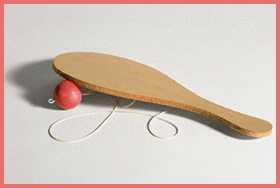
Tech Toys VIWeb Page EditorsbyRobert Fabian |
More and more people need to build web pages. It may be just for posting on an Intranet, but it still needs to be an html-based web page. There is a rapidly growing number of different ways to produce web pages. What to chose?
WISIWYG (what-you-see-is-what-you-get) editors have an obvious attraction. You see what the reader will see. Except, it doesn't quite work that way on the web. The author describes the style, the browser decides how it will be displayed.
An example may help to explain what happens. The author identifies "This Is Important!" as the most important kind of heading. "<h1>This Is Important!</h1>" is inserted in the web page. The user's browser determines how to display Heading1 material, i.e. the text between "<h1> ... </h1>".
Normally, something reasonable will be done with such text, but it's not under the author's control. In a similar way, the author can't control the size of the page the user sees. Different users will have different resolution monitors.
Using a familiar word processor would be convenient, but I'm uncomfortable when a word processing offers to "save as" html. The result is often not what is expected, especially when the reader uses different settings in her browser. Moreover, the html code can be ugly, and bloated in unseemly ways.
For simple web pages, I find that Netscape Composer is a comfortable choice. It doesn't do fancy things, and that's good. Its support is limited to basic html. Most browsers will display the resulting pages correctly. It also happens to be a part of the free Netscape Communicator.
Netscape Composer doesn't answer all needs. It has no forms, no scripts, and no good way to deal with multiple pages. HomeSite 4, from Allaire, is more powerful - a satisfying combination of WISIWYG and direct html editing. It knows about projects, forms and scripts.
HomeSite 4 has a number of neat features. It's got wizards for standard tasks. It's got direct right-click editing of tag options. It can check for html compatibility. It's able to chart all interconnections on a site. It's not free, but is priced at less than $100 (US). Worth it.
HomeSite doesn't do anything fancy with project management or graphics. A full web site can have thousands of pages, with many people working on it. Often, document control is required. HomeSite will interface with Version Control Systems, but does not provide VCS itself.
In my experience, one graphics-oriented web editor stands above the rest. Dreamweaver knows about dynamic html and all the neat things it can do. If you need fancy graphics, Dreamweaver is good. It works with HomeSite, produces clean html, and provides basic checkin/checkout for a site's web pages.
Consider Dreamweaver if you need fancy graphics. I wonder, however, about the value of much Internet graphics. Too often, graphics deliver no value to the user. Think about her before you bulk-up with graphics of marginal value.